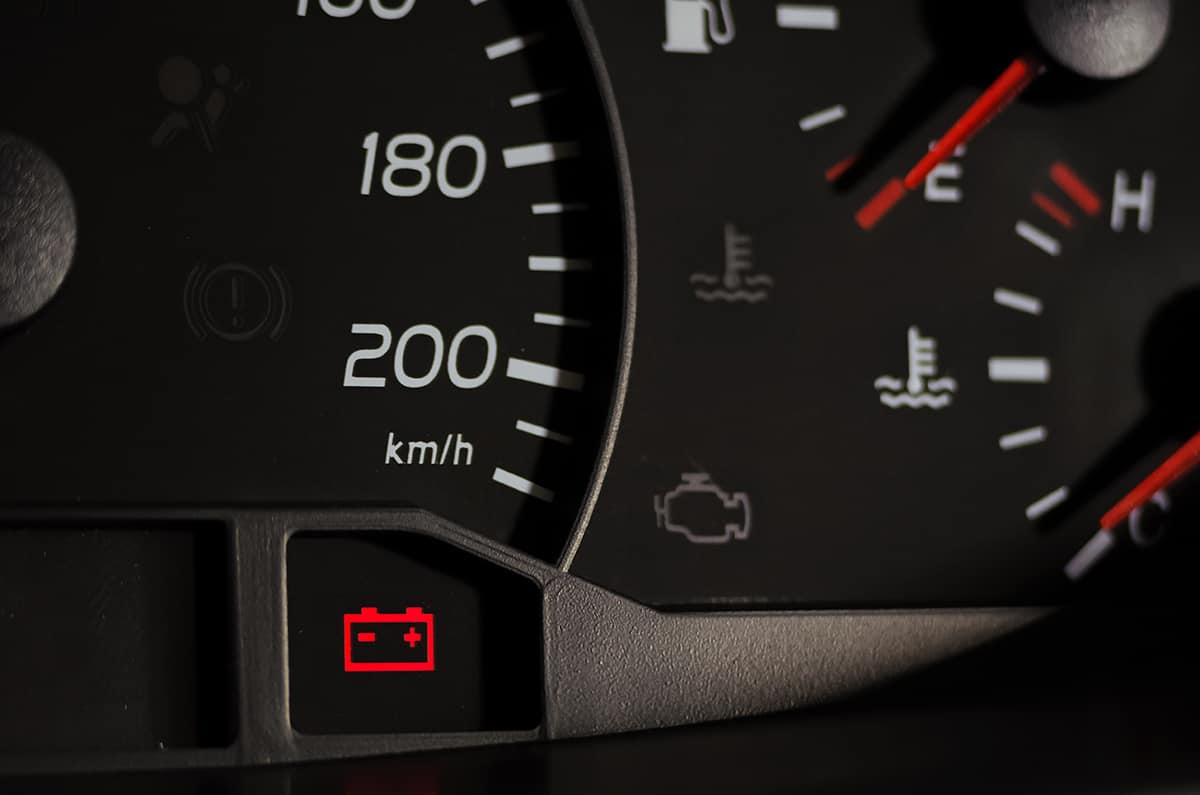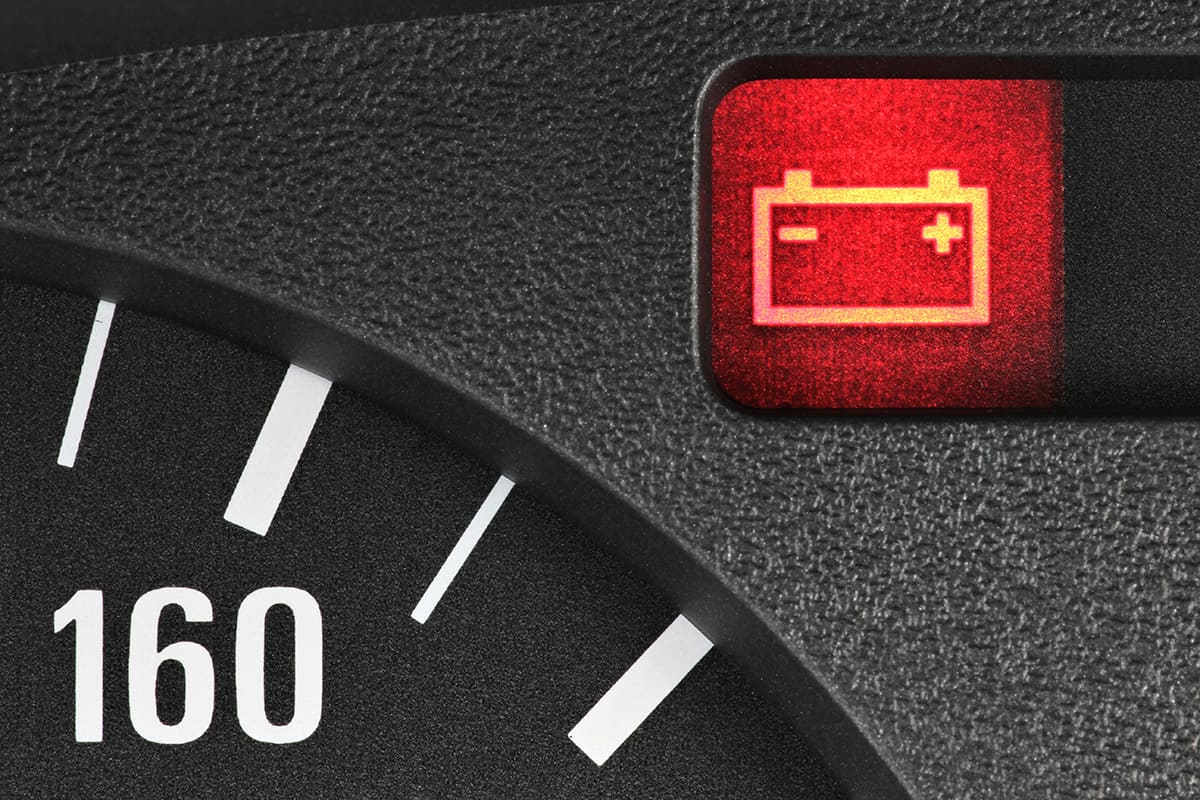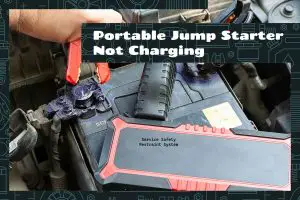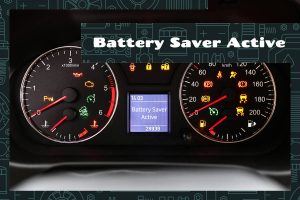In today’s world of technologically advanced vehicles, a reliable battery is essential for powering a myriad of systems and ensuring a smooth driving experience.
However, one common issue that drivers may face is a battery discharge warning. This can lead to an array of problems, ranging from the inconvenience of a dead battery to potential damage to the vehicle’s electrical components.
Some common causes of the battery discharge warning include:
- Battery age
- Temperature effects
- Alternator failure
- Voltage regulator malfunction
- Parasitic drain
- Leaving lights or accessories on
- Infrequent vehicle use
In this guide, we will talk about what happens when your car battery gets low on power, why it happens, and what you should do when it happens. We will also give you tips on how to figure out if your battery is having problems.
What Does Battery Discharge Warning Mean?
A battery discharge warning means that your car’s battery is not providing enough power to the electrical system or that the battery is draining faster than it is recharging. This warning is important because it helps you identify potential issues before they become bigger problems.
The warning light is a small symbol on your dashboard or infotainment display, usually shaped like a battery. It serves as an alert system to inform you when there’s a problem with your battery’s power output. When the light comes on, it’s a sign that your battery may need attention or that there’s an issue with your car’s charging system.
Causes of Battery Discharge

Knowing these factors will help you take preventive measures and avoid unexpected breakdowns. Here are the most common causes of battery discharge:
1. Battery age
Batteries have a limited lifespan, usually between 3-5 years. As they age, their ability to hold a charge decreases, leading to weaker performance. Eventually, the battery will not provide enough power to the vehicle, resulting in discharge.
2. Temperature effects
Extreme temperatures can affect a battery’s performance. High temperatures can cause the battery to lose its charge more quickly, while low temperatures can slow down the chemical reactions within the battery. In both cases, the battery may not provide enough power, causing discharge.
3. Alternator failure
The alternator is responsible for recharging the battery while the vehicle is running. If the alternator fails, the battery won’t receive enough power and will eventually discharge. Signs of a failing alternator include dimming headlights, a whining noise, and the battery discharge warning light on your dashboard. A failing alternator can also be a cause of why some cars, such as Subaru, can’t start in the first place.
4. Voltage regulator malfunction
The voltage regulator controls the amount of electricity sent to the battery, ensuring it receives the correct voltage to recharge. If the regulator malfunctions, the battery may receive too little or too much voltage, causing it to discharge. A faulty voltage regulator may also damage the battery and other electrical components in the vehicle.
5. Parasitic drain
Parasitic drain occurs when electrical devices in the vehicle continue to draw power even when the engine is off. This can happen due to a malfunctioning component or a short circuit. Over time, the battery will lose its charge, causing it to discharge.
6. Leaving lights or accessories on
Leaving your vehicle’s lights or accessories on, such as the radio or interior lights, can quickly drain the battery. If these devices are left on for an extended period, the battery may not have enough power to start the engine, resulting in discharge.
7. Infrequent vehicle use
If a vehicle is not used regularly, the battery may slowly lose its charge. This is because the battery still provides power to some electronic components, even when the vehicle is off. Over time, the battery may discharge, and the vehicle may not start when you need it.
What to Do When Your Battery Discharge Warning Comes On
A battery discharge warning light can be quite concerning, but don’t panic just yet. This guide will walk you through the steps to take when your battery discharge warning light comes on.
1. Safely pull over
As soon as the battery discharge warning light comes on, find a safe place to pull over. Continuing to drive with a discharging battery may cause your vehicle to shut down, leaving you stranded or potentially causing an accident. Once you’re safely parked, turn off all unnecessary electrical devices to conserve battery power.
2. Check the alternator belt
Open the hood and locate the alternator belt. Inspect it for any signs of wear, damage, or looseness. If the belt appears damaged or loose, it may not be properly charging the battery. In this case, you should seek professional assistance to replace or adjust the belt. If the belt seems to be in good condition, move on to the next step.
3. Inspect battery connections
Look for any signs of corrosion, damage, or loose connections on the battery terminals. A poor connection can prevent the battery from charging properly. If you find any issues, clean the terminals using a wire brush and tighten the connections.
4. Test the battery and alternator
Using a multimeter, you can check the battery’s voltage to determine if it’s charging correctly. A fully charged battery should read around 12.6 volts with the engine off, and between 13.7 and 14.7 volts with the engine running. If the voltage is too low, it could indicate a problem with the battery or the alternator.
5. Seek professional help
If you’re unable to diagnose the issue or if the problem persists after following the above steps, it’s time to consult a professional mechanic. They will be able to determine the exact cause of the warning light and perform any necessary repairs.
Replacing a Failing Battery
If you have a spare car battery on hand or had one delivered to your garage, follow these steps to replace your car’s old battery.
- Turn off the vehicle and ensure it’s in park or neutral with the emergency brake engaged. Disconnect any accessories and remove the keys.
- Put on safety gloves and goggles to protect yourself from battery acid.
- Locate the battery, typically found under the hood, and identify the positive (+) and negative (-) terminals.
- Using a wrench, loosen and disconnect the negative cable first, followed by the positive cable.
- Unscrew any brackets or clamps holding the battery in place and carefully remove the battery from the vehicle.
- Clean the battery tray and terminal clamps using a wire brush and a mixture of baking soda and water to remove any corrosion.
- Place the new battery in the tray, ensuring it is properly oriented with the positive and negative terminals.
- Reattach the battery clamps or brackets, securing the battery in place.
- Connect the positive cable first, followed by the negative cable, and tighten the connections with a wrench.
- Start the vehicle to confirm the new battery is functioning properly. Dispose of the old battery according to local regulations.
Signs your battery needs replacement
- Slow engine cranking—The battery struggles to provide enough power to start the engine.
- Frequent jump-starts—The battery cannot hold a charge and requires external power to start the vehicle.
- Dimming headlights—The battery is unable to provide consistent power to the headlights, causing them to dim.
- Swollen or leaking battery case—Damage to the battery case can indicate a failing battery.
- Age—If your battery is older than 3-5 years, consider replacing it.
Choosing the right battery
- Compatibility—Check your vehicle’s owner’s manual or consult a professional to determine the correct battery size and specifications.
- Cold Cranking Amps (CCA)—Choose a battery with a CCA rating appropriate for your climate. Higher CCA ratings are better suited for colder temperatures.
- Reserve Capacity (RC)—A higher RC indicates a longer-lasting battery when the charging system fails.
FAQs
1. How long should a car battery last?
A car battery typically lasts between 3 to 5 years, depending on factors such as the type of battery, driving conditions, and climate. Regular maintenance and proper care can help prolong the life of a battery, but eventually, it will need to be replaced as its ability to hold a charge diminishes over time.
2. Can a battery discharge warning light indicate other issues?
Yes, a battery discharge warning light can indicate issues other than a failing battery. It can also signal problems with the alternator, a damaged or loose drive belt, or poor connections at the battery terminals. If the warning light comes on, it’s essential to diagnose the problem and address it promptly to avoid further damage or vehicle breakdowns.
3. Can you drive with a battery discharge warning light on?
It’s not advisable to drive with a battery discharge warning light on. Continuing to drive with a discharging battery may cause your vehicle to shut down, leaving you stranded or potentially causing an accident. As soon as the warning light comes on, find a safe place to pull over, turn off all unnecessary electrical devices, and diagnose the issue to determine the appropriate course of action.






